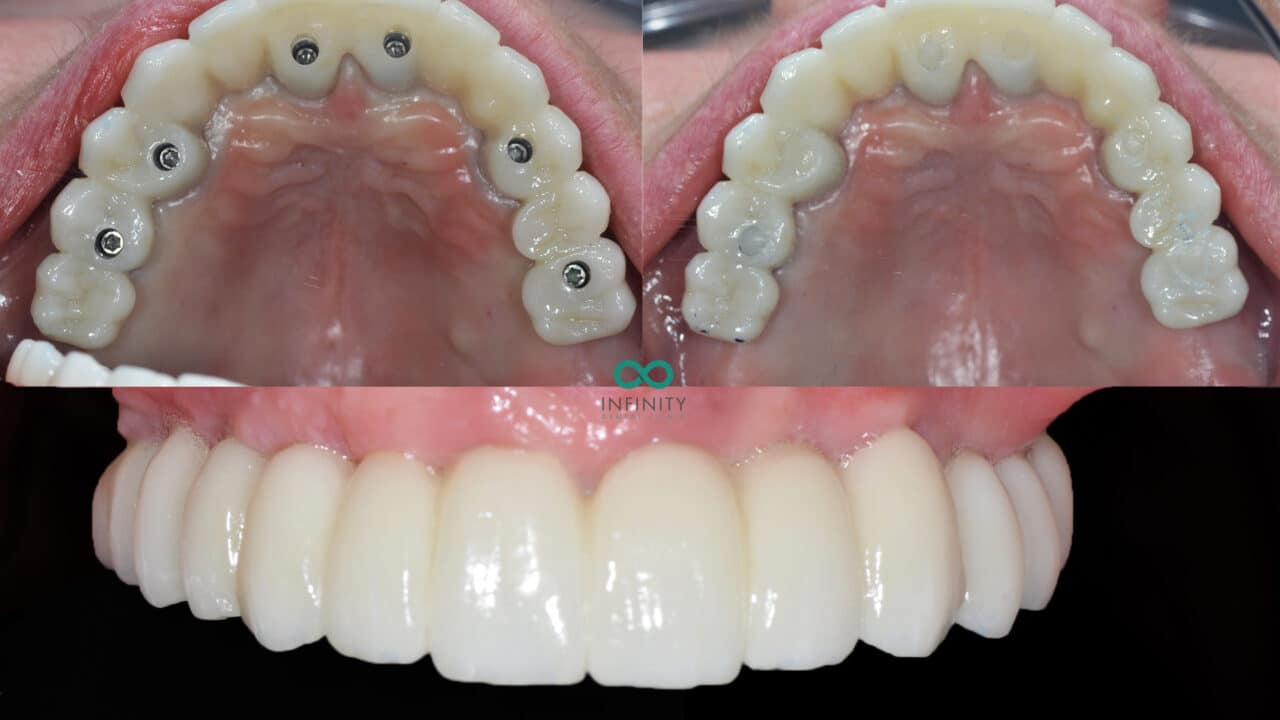Dental Sense - Questions
Dental Sense - Questions
Blog Article
Get This Report about Dental Sense
Table of ContentsWhat Does Dental Sense Do?Facts About Dental Sense Revealed5 Simple Techniques For Dental SenseSome Known Details About Dental Sense
are medical devices operatively dental implanted into the jaw to bring back an individual's ability to eat or their look. They give assistance for synthetic (fake) teeth, such as crowns, bridges, or dentures. When a tooth is lost as a result of injury or illness, a person can experience issues such as quick bone loss, malfunctioning speech, or modifications to eating patterns that lead to discomfort.Dental implant systems consist of a dental implant body and oral implant abutment and may also consist of an abutment addiction screw. Root canal procedure. The dental implant body is surgically put in the jawbone instead of the tooth's root. The oral implant abutment is generally connected to the implant body by the joint addiction screw and prolongs with periodontals right into the mouth to sustain the affixed artificial teeth
(https://share.evernote.com/note/12f780ae-8ad1-693d-87b6-b9c57ca5907c)Framework of The Dental Implant System choosing oral implants, talk with your dental service provider about the possible benefits and risks, and whether you are a prospect for the procedure. Points to take into consideration: Your general health and wellness is an important consider identifying whether you are a good candidate for dental implants, how much time it will certainly require to heal, and for how long the dental implant might remain in location.
Smoking may affect the recovery process and decrease the lasting success of the implant. The healing process for the implant body may take a number of months or longer, throughout which time you commonly have a short-lived joint instead of the tooth. the oral implant treatment: Thoroughly adhere to the dental hygiene directions offered to you by your dental company.
The Greatest Guide To Dental Sense
Implant failure can lead to the requirement for another surgery to take care of or change the implant system. Brings back the capacity to eat Recovers cosmetic appearance Assists maintain the jawbone from diminishing because of bone loss Preserves the wellness of the surrounding bone and gums Assists keep adjacent (nearby) teeth secure Improves top quality of life Damages to surrounding all-natural teeth during dental implant placement Injury to the surrounding tissues during surgery, such as sinus perforation Injury throughout surgical treatment (for example, fracture of surrounding jawbone) Insufficient function, such as seeming like the teeth do not bite with each other usually A feeling that the tooth hangs or turning in place resulting from an abutment screw loosening up Implant body failing (looseness of the implant body) as a result of systemic infection, which might be more probable in clients with unrestrained diabetes due to local infection in bone and gum tissues supporting the implant body because of delayed healing, which might be most likely in individuals that smoke Trouble cleaning up the periodontals around the dental implant, resulting in poor oral health Untreated periodontal illness Post-surgical feeling numb due to nerve impingement or damage Always notify health care suppliers and imaging service technicians that you have dental implants before any type of magnetic resonance imaging (MRI) or x-ray treatments.
FDA is not knowledgeable about any type of negative occasions reported for MRI or x-ray treatments with dental implants. Oral implants systems are usually made of products that comply with global agreement criteria of the International Company for Standardization (ISO) or ASTM International. These requirements have information of what makes a risk-free material.

A dental implant is a structure that changes a missing out on tooth. With screw-like devices, the cosmetic surgeon inserts a dental implant into the jawbone, and it functions as a support for a fabricated tooth, called a crown. A tool called an abutment links the man-made tooth to the dental implant. The crown is tailor-made to fit the individual's mouth and match the shade of their teeth.
6 Easy Facts About Dental Sense Explained
Some people are not qualified for dental implant surgical treatment. It is for oral specialists to operate on people with: acute illnessuncontrollable metabolic diseasebone or soft tissue illness or infectionIf these concerns are dealt with, a person can have the surgery. In, dental cosmetic surgeons refrain from operating people with: If people with any of the above undertake oral implant surgery, there is a higher threat of the dental implant failing.

Oral implant surgery is a tailored process. It's not the very same for every person. The following offers a basic introduction of what you can anticipate your dental expert, oral doctor, periodontist or prosthodontist to do: Put the implant surgically. Offer you time to recover. Affix the article and last crown, bridge or denture.
Next, your doctor will very carefully position the oral implant into your jaw. If your implant is near the front of your mouth, your dental professional will certainly make a momentary tooth for you to put on till you recover.
Everything about Dental Sense
Your company can tell you what to expect in your scenario. During the healing phase, your jawbone must fuse to the oral implant. This process, called osseointegration, is critical for stability and long-term success. This process can take anywhere from three to nine months. In some instances, it might take longer.
When your implant heals, your dental practitioner can affix the joint (tiny port message) and your last reconstruction (crown, bridge or denture). This generally takes regarding one hour to complete and might need a second minor surgical treatment. You shouldn't really feel any kind of pain throughout your dental implant procedure due to the fact that your service provider will certainly make use of medicine to numb your periodontals.
Report this page